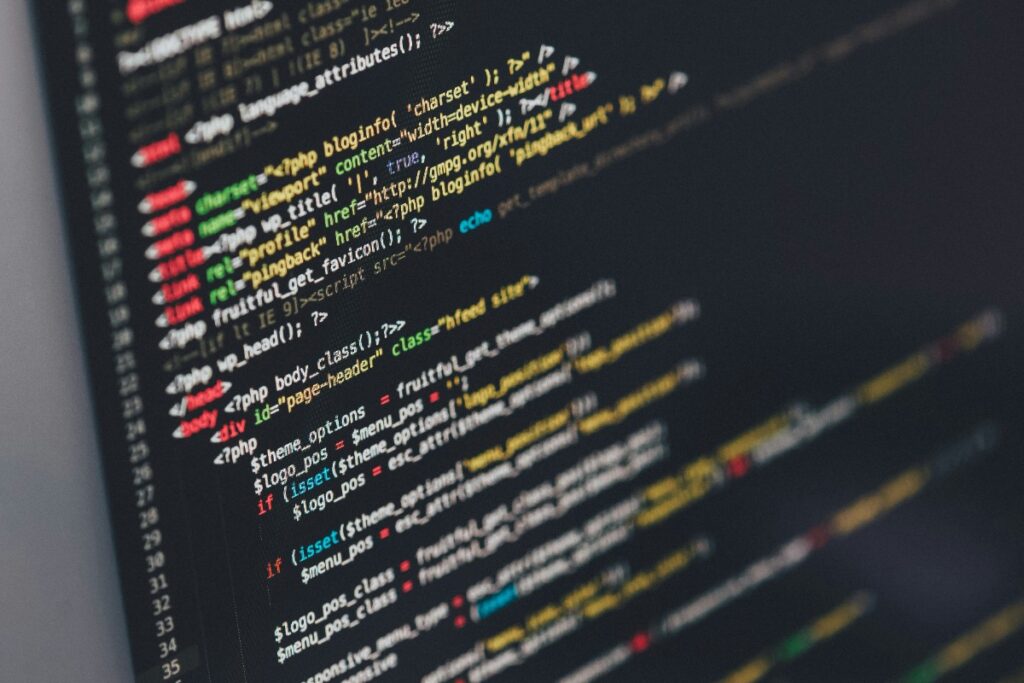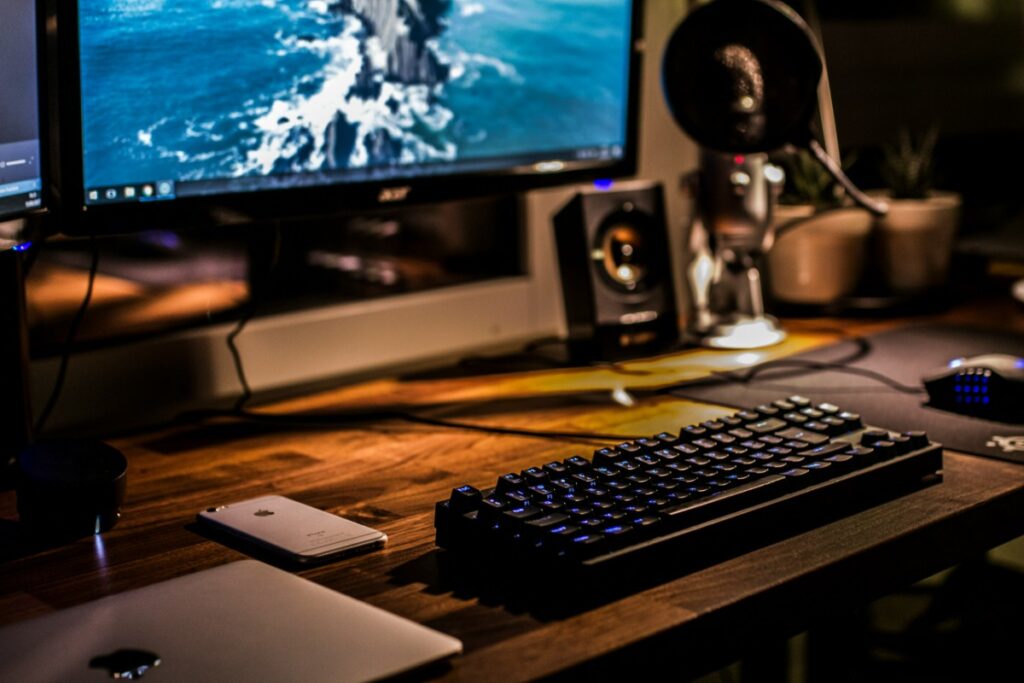Augmented Reality (AR) is not just a hype technology but a real revolution in the way of interaction with the world. Unlike virtual reality, where users are completely immersed in a virtual world, AR enriches the real world with virtual objects. This allows you to create new user interfaces and interactions that make daily life easier and more efficient. AR devices and applications are actively exploited in a wide range of areas: from culture and retail to medicine and industry. Augmented Reality Applications evolved extremely rapidly during these past few years, and the opportunities it presents now are far wider than they were even two years ago. As technologies are developing and AR-interfaces are expanding, there are more and more opportunities to apply this technology to everyday life.
As an information technology professional, we understand how much innovative solutions mean, and AR is already proving itself. Through the application of augmented reality, new opportunities for creating smart applications, business process re-engineering, and unique user experiences are unveiled.

In this article from Celadonsoft, we’ll detail how AR is revolutionizing industries and what real-world applications of this technology can be leveraged to optimize business processes and create innovative products implementation.
Medicine: Revolution in diagnosis and treatment
Augmented Reality Applications are revolutionizing medicine at a very fast rate, opening up new avenues for diagnosis, treatment, and training medical personnel. Technology allows virtual objects to overlay on the real world, opening up new opportunities for increasing accuracy and efficiency in every area of health care.
Surgical navigation
The most striking example of AR in medicine is perhaps surgical navigation. With the help of AR systems, surgeons are able to visualize vital data on the operating area in real time, such as anatomical features, medical image information (e.g., MRI or CT), and even precise instrument locations. This improves operation design accuracy significantly and minimizes dangers to zero.
Example: During AR-based operations, the surgeons are able to “see” hidden vessels or organs, a big assistance during complex procedures such as neurosurgery or cardiac surgery. The system even provides real-time alerts about tool positions or requests for safe locations.
Learning and simulation
Celadonsoft: “AR brings new insights to the education and training of medical professionals. Use of virtual trainers enables medical personnel to rehearse in a safe environment, simulating complex procedures without putting patients at risk. Training enhances expertise, diminishes mistakes and orients specialists in real conditions.”
Example: Medical university students can use AR to practice performing complex manipulations such as injections or CPR. Instead of practicing on real patients, they can practice with simulated situations, which is less stressful and allows them to practice under controlled environments.
Patient support
AR technologies are also applied in patient aiding by improving the awareness and perception of patients about what’s happening during treatment. By using mobile applications or wearable devices, patients can be given detailed visual explanations about their diseases, medical treatments, and recovery process. Not only does it improve the satisfaction of patients, but compliance with doctor’s instructions is also improved.
For example, with AR, one can show the patient how his or her surgery will proceed or what will happen at each step of healing from injury. These reliefs stress and allows patients to make more informed decisions about their treatment.
Industry: Process optimization and enhancing safety
Augmented Reality Applications are being extensively used in industry nowadays, offering new possibilities for business process optimization, productivity, and safety. Consider key areas where AR has the most significant impact, like Proven Testing Strategies for Node.js Projects:
Assembly and service: Transformation in production processes
Integration of AR solutions in the assembly stage allows manufacturing firms to improve accuracy and speed up processes. With the help of AR glasses or tablets, workers are led through step-by-step instructions and visual cues directly in the field of view. This eliminates mistakes and reduces the training process for new personnel significantly.
Example of application:General Electric uses AR to service the turbines, showing on-site engineers precise diagrams and instructions for the repair and maintenance of equipment.
Employee Training: Quicker Adaptation and Efficiency
Augmented reality systems make it possible to create virtual trainers that replicate real production processes. This makes it possible for staff members not just to learn theory, but to acquire practice without having to interfere with real production processes. This approach significantly reduces risks associated with on-site training.
Example of application: Porsche has introduced AR trainers in employee training, which have reduced the time to master new work processes and reduce errors.
Improving safety: real time, real data
The augmented reality also dramatically improves safety at manufacturing plants. Critical notifications, such as warnings of potential danger or reminders for safety procedures, can be displayed in real time directly into workers’ fields of vision. This allows you to respond quickly to changing situations, minimizing health and safety risks.
Example of use: Boeing makes use of AR glasses to display information about possible hazards and equipment status, enabling employees to respond quickly to a possible problem.
Warehouse management: Optimization of logistics processes
AR technologies are also actively used in warehouse management and logistics. With the help of AR-systems, employees can get information on the placement of goods and the most optimal paths for their movement. This greatly increases the order processing rate and the productivity of the warehouse in general.
Example of application: DHL has also launched AR in its warehouse operations, where employees practical use cases AR glasses to quickly identify the goods needed and carry out warehouse procedures, reducing processing times by 15%.
The introduction of AR in industry allows not only to optimize processes, but also to significantly reduce costs and enhance safety in production. In the coming years, we can expect even more development of AR applications in various segments of industry, opening up new opportunities for innovation and productivity growth.
Culture and art: interactive performances and new interactions
Augmented Reality Applications are slowly revolutionizing traditional representations of culture and art, creating new content creation and perception opportunities. AR interaction with art turns the passive viewer into an active one, significantly boosting emotional load and engagement.
Museum Displays: Renewal of Displays
The use of AR technology in museums and galleries is a pioneering opportunity to create multimedia exhibitions. AR provides the visitors, for example, with a view of 3D images of objects that have been lost or destroyed, or the discovery of historical origins of paintings. This enhances the multi-faceted experience, allowing people to delve deeper into culture and history.
- Virtual tours: You are able to offer interactive tours that are customized according to the visitor’s interest and desire using the help of AR. For example, the visitor can choose what part of the exhibits is of his interest and the system will offer in-depth information on them.
- Interactive comments: Augmented reality technologies make it possible to display information on the screen of the device, whether a smartphone or AR-glasses, and this makes learning and interaction with objects more visual and interesting.
Cultural activities: stimulating creativity
AR is employed in cultural activities such as festivals, theatre productions or concerts where virtual ideas are merged with actual objects and persons. For example, in music festivals, AR can be utilized to create visual effects that are in response to the actions of the participants or the environment.
- Theatrical performances and plays: On stage, AR can enhance the performances with virtual scenery, characters, or effects, enhancing the perception of events on stage by spectators. This enables creators to move beyond the usual theatrical forms.
- Multimedia installations: In festivals or museums, you can include AR as installations that interact with participants. Therefore, the viewers are part of the artwork as a participant, not as a spectator.
New art education and participation
AR technologies are also becoming an important tool in educational programs and art-education. Interactive textbooks and apps with AR enable students to interact with works of art, expanding their perception and understanding of art.
- Educational content: Using AR, you can create specialized educational content and courses that are a blend of art, history, and technology. Students can «live» recreate historical scenes, learn about anatomy, observe the evolution of architecture or simply learn more about artistic techniques.
- Workshops and seminars: In learning courses, AR can be used to host workshops where the learners witness the process of producing works of art and «immerse» themselves in the process of producing with real-time visualization.
Retail and Marketing: Augmenting the Customer Experience with AR

Augmented reality is revolutionizing the way we do business in the retail sector at a very rapid rate. Utilization of AR technology allows companies like Celadonsoft to upgrade customer experience, increase engagement and offer consumers alternative means of engaging with products. Consider some illustrations of how AR is utilized in retail and marketing:
Virtual fitting
AR technologies allow clients to try clothes, shoes, or accessories online. Virtual fitting rooms provide the possibility to be integrated with mobile applications, by which you can place photos of clothes over a user’s image. This functionality significantly increases shopping comfort and reduces returns.
Example: Zara and Nike use AR for creating virtual fitting rooms where customers can «measure» without leaving home.
Interactivе advertisement campaigns
Adding AR to advertisement campaigns enables creating new and interesting ways of communicating with the brand. AR users can visualize 3D models of products and participate in quests and contests that engage them with the brand.
Example: Coca-Cola used AR in their advertisement campaign, where customers were able to see interactive elements through the app, such as animations that appear when the camera looks at the packaging.
Promotions and discounts
Stores start using AR to create special offers that are activated by touching certain objects within the store or product packaging. This not only increases the appeal of customers, but also offers a chance to give personalized discounts and bonuses.
Example: Starbucks has used AR in its loyalty scheme by offering discounts or free products to customers who scan special markers at the store.
Conclusion: The future of augmented reality in business and life
Augmented reality continues to evolve, opening up new opportunities for business and everyday life. AR technologies not only offer new options for communication with customers, but also solve everyday problems in various areas of industry.
Trends and forecasts
Every successive year finds AR becoming increasingly accessible and a part of everyday life. In the years to come, AR is expected to expand even more and become an integral component of sectors such as medicine, education, retail, and manufacturing. AR technologies are expected to become even more accurate, accessible and user-friendly.
Predictions: AR could potentially in the future be incorporated into everyday devices such as spectacles or contact lenses, which will further incorporate the technology into our lives.
Ethical and social aspects
The development of AR raises ethical and security issues. There should be protection for users’ personal data to avert breaches of confidentiality. There should also be control over the application of the technology in advertising and marketing to prevent excessive pressure on consumers.
Discussion: It is essential to cater for ethical use of AR in order to mitigate the possible risks that might emanate from its spread and usage across many areas.


